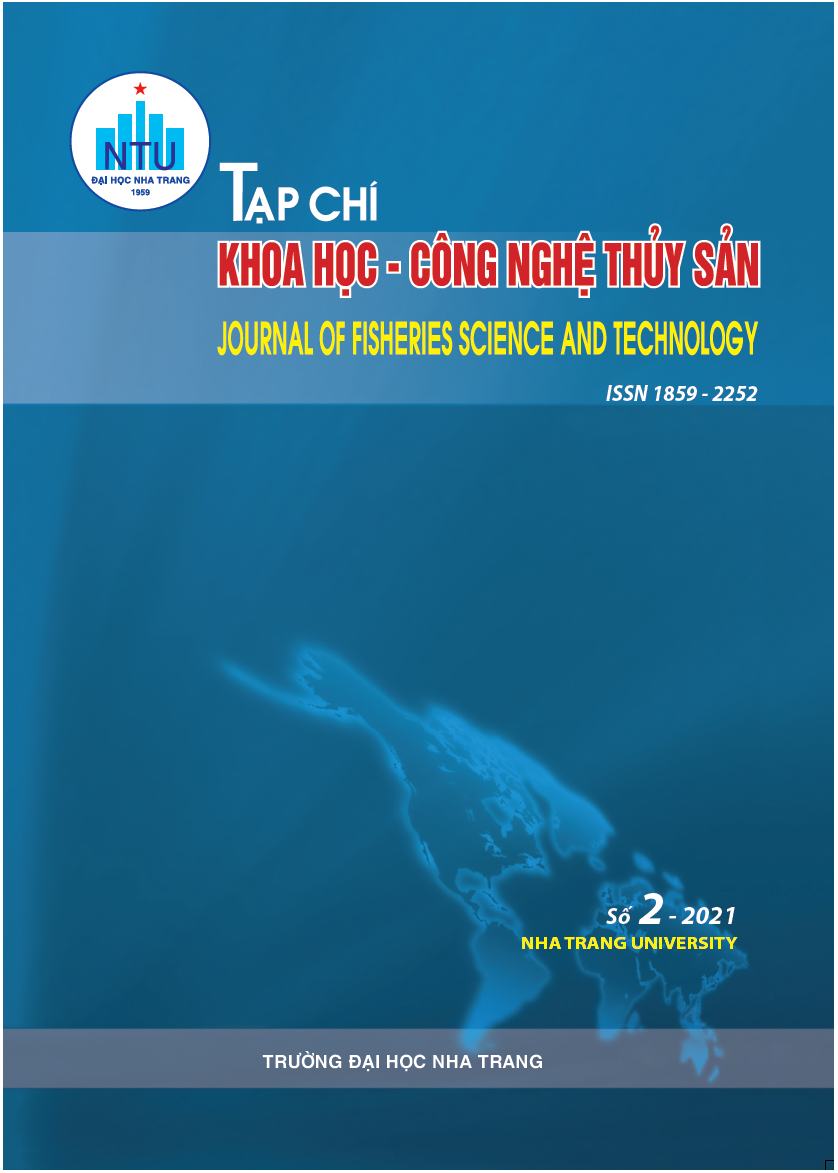##plugins.themes.huaf_theme.article.main##
Abstract
This study was conducted to (1) determine the growth of blue shrimp and rabbitfish and (2) estimate the nutritional contribution (carbon and nitrogen) of the feed sources to the growth of shrimp and fish in the shrimp-fish polyculture system. The experiment was carried out for 12 weeks, in 12 circular composite outdoor tanks (1.7 m2, 1275 L water volume). Shrimp (2.9 g) were randomly stocked at density of 15 shrimp•m−2 without rabbitfish (control), with rabbitfish (25.5 g) at low density (1.2 fish•m−2) (LDRB) and high density (2.4 fish•m−2) (HDRB). The results showed that adding of rabbitfish did not affect the growth of blue shrimp. At the end of the experiment, the yield of shrimp and rabbitfish combined increased 48.8% in LDRB and 106.2% in HDRB compared to the yield of shrimp in the control, and the feed conversion ratio decreased by 32.8% and 51.5% in LDRB and HDRB, respectively. The pellet feed is the primary source of nitrogen and the natural biota is the second source for both shrimp and rabbitfish. Meanwhile, the natural biota is the main carbon source and pellet feed is the secondary source for both species. The pellets contribute 70 - 85% nitrogen and 29 - 40% carbon to shrimp growth and the remainder is derived from the natural biota.
Keywords: Polyculture, blue shrimp, goldlined rabbitfish, integrated production, stable isotope

